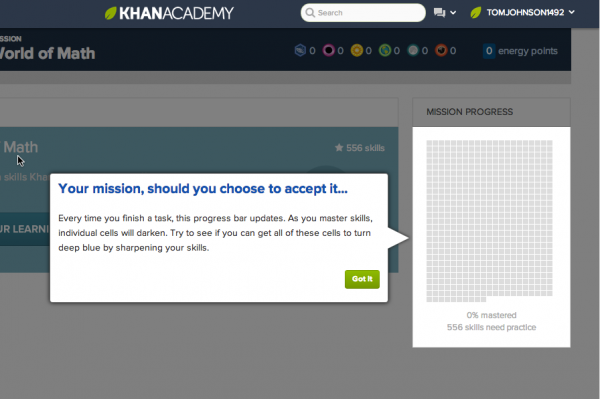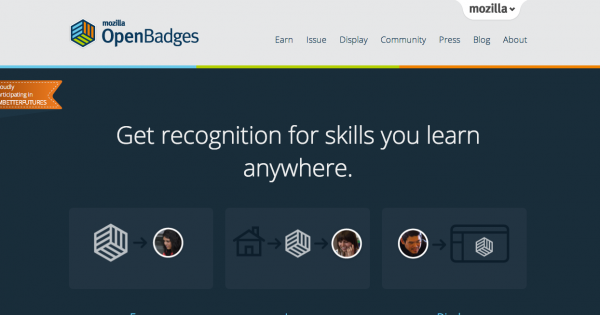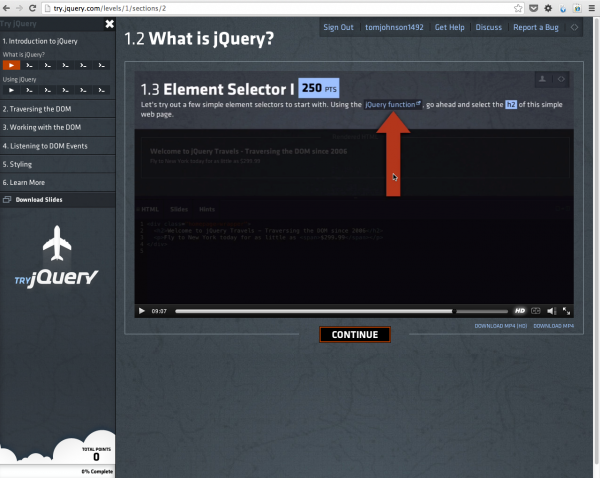Gamification and user engagement in e-learning and documentation
For the past year I've been working at a gamification startup company called Badgeville in Silicon Valley. Badgeville is one of a handful of companies specializing in “gamification.” When you gamify an application, you integrate game elements into non-game contexts to better engage your users.
If done right, gamifying an application can increase the engagement of your users by up to 48%, compared to only 28% for those who don't use gamification, according to surveys by the Aberdeen Group.
When your users are engaged, they participate more fully on your site – commenting, voting, sharing, rating, posting, downloading, or performing other actions. This is why Gartner predicts that 70% of companies will have at least one gamified application by 2014.
Examples of gamification
When I tell people I work for a gamification company, their reaction is usually one of confusion. Yet the world around us has been gamified for a long time under other names.
Here are a couple of non-Internet examples you'll immediately recognize. The badges in scouting programs are a game element. Sewing a badge onto my daughters' Brownie and Daisy Girl Scout uniforms gives them a sense of achievement and status which in turn motivates them to participate in their troop even more. The badges in Girls Scouts and Boy Scouts derive from the badges and ranks in the military.
When you get a punchcard at a local store that requires you to buy 10 ice cream cones in order to get one free, that's a game element. When you get frequent flier points and free hotel nights for flying thousands of miles on an airline, that's a game element. These game elements are designed to increase your loyalty by providing a concrete measure of progress and encouraging you to perform specific tasks with a free item as the reward.
Gamifying activities isn't new, and now companies are gamifying their applications too. No doubt you've seen game elements on many forum sites. For example, with Madcap Software forums, as you respond to user threads, you rack up more posts and increase your status. As you increase your posts, you move from a Junior Propellerhead to a Propellus Minorus to Senior Propellus Maximus and more. Your status increases both your trustworthiness and reputation.
Stackoverflow.com provides another example of gamification. Your reputation increases as you answer questions, receive votes for your answers, and participate in other ways. Here's a profile of a user who has provided more than 2,000 answers.
In community settings like forums and wikis, where user interaction is needed to drive the site's content, giving users reputation points, badges, status, and other feedback can inspire them to participate and engage more.
Many online education sites, such as codeacademy.com, khanacademy.org, codeschool.com, and others implement game elements to better engage users. The more courses and lessons you complete, the more badges you earn.
Here's a screenshot from Khan Academy. The goal or “mission” is to complete all the tasks so that you darken each square in the bar. This simple graphic helps you visualize your progress in mastering a skill.
Of course, you don't go to the sites because of the badges, but the game elements do make learning more fun and rewarding.
Designing gamification solutions
Engaging users through game-like elements is not an easy task. Although many companies are gamifying applications, Gartner says that about 80% of the gamification programs will fail.
To design a successful gamification/engagement strategy for your application, you have to do some careful analysis and planning. You start by identifying the goals of your users. What do your users want to do and achieve?
Next, you define the goals of your business. What business objectives do you have for your users?
Then comes the magic question: Are there ways to leverage your user's goals and values to achieve your business' ends? Figuring out ways to overlap the users' goals with business goals is the art and science of successful gamification in the corporate world.
If you've ever been on a site where you “earned a badge” without even understanding what the badge is for or what it represents, the game element can be somewhat meaningless.
On the other hand, if you're trying to learn JavaScript and you suddenly earn the “JavaScript Level 1” badge, this badge is much more meaningful. It relates to an actual goal you have.
If the badges motivate your users to subscribe to your site to continue learning, then you've achieved a business end.
Intrinsic versus extrinsic rewards
When designing rewards, one factor to consider is whether to focus on intrinsic rewards (like a badge representing learning), or extrinsic rewards (such as free airline travel).
Despite what you might expect, extrinsic motivators aren't the most powerful form of engagement. The problem is that extrinsic rewards place the value of the activity on something other than the activity itself.
For example, if you give your child $5 for reading a book, you might soon find that the child becomes interested in reading as a means of earning money. When you remove the extrinsic motivator, the child might lose the desire to read.
Nevertheless, extrinsic motivators have their place in engagement. At times, users may not know the value of the activity. An extrinsic motivator can help introduce users to an activity they might not otherwise perform. And once introduced, the user can transition from an extrinsic to intrinsic motivation.
For example, Ellis Pratt relates how Atlassian provides T-shirts to users who successfully implement JIRA, completing the Dragon Slayer installation game. The T-shirts are pretty popular. Though an extrinsic motivator, the T-shirts help people feel good about their success in installing JIRA. It helps transition them to actually using and administering JIRA.
However, when possible, engaging users intrinsically is preferable. Intrinsic motivators connect with a user's inner values, so intrinsic motivators can engage users for the long term.
For example, if you want to live a healthy lifestyle, an application that counts calories and gives you badges for hitting your calorie targets can motivate you intrinsically. In this scenario, the company doesn't need to send you a free T-shirt for performing the desired behavior because that behavior already connects with a goal you value.
If all users' goals already aligned with business goals, companies wouldn't have much of a need to gamify anything, since users would already be engaged. Gamification can help get users to take the next step, such as to downloading, subscribing, or purchasing a product.
Status motivators and universal reputation
One of the strongest intrinsic motivators is status. Badges that reinforce your status as an expert in a specific industry have a strong appeal and innate value to professionals in that industry.
For example, in tech comm, when MindTouch released their industry influencer badges, dozens of people quickly added these badges to their sites because, although just a simple graphic, it had real value and meaning. (The badge also served a business objective for Mindtouch: increasing the visibility of their company.)
One problem with badges is that they often have meaning only within the site where you earned them. For example, the badges you earn from codeacademy.com appear only on your codeacademy.com profile. But what if you could take your badge with you?
Mozilla's Open Badges project does just that. You can “earn badges from anywhere, then share them wherever you want—on social networking profiles, job sites and on your website.”
For example, organizations might create an e-learning course on their site focusing on a specific skills (e.g., SharePoint Administration), and reward users with an Open Badge for completing it. The user can then display the badge on his or her own site and profile, which increases the value of the badge beyond the scope of the site where the user earned it. This kind of status recognition is known as a “universal reputation.”
Gamifying documentation
The many successful examples of gamification probably have you wondering whether gamifying documentation might help increase engagement among your users.
It certainly could, but gamification solutions are usually more connected to e-learning than standalone documentation. There are a couple of reasons for this.
First, you need a login system to track users. This usually means your documentation needs to be housed on a website where each logged-in user and their actions are identifiable.
Second, you'll probably need developer resources to integrate your engagement program with your website. Each time the user clicks a button, views a video, or takes some other action that you want to encourage, you need event listeners to trigger and communicate with a system that gives points, rewards, or other feedback to the user.
In your documentation, you might give points to users for reading content, voting on articles, and providing comments. Additionally, if you have a wiki, you might give users points and badges for editing and creating new articles.
However, this kind of gamification isn't nearly as successful as giving users points and badges for finishing courses, watching a series of videos focused on learning a specific goal, or for demonstrating expertise in a knowledge domain.
Badges in an e-learning context are meaningful to users because they represent progress in mastering a subject the user wants to learn. When you complete a course, you receive immediate positive feedback in having achieved more learning. The badges are a way of visualizing your progress and effort in learning a specific subject.
In contrast, documentation – written as modular, standalone topics – usually doesn't encourage users to master a specific subject in the same way. Users often consult documentation as they would an encyclopedia – to find answers to specific questions, or to learn how to do a specific task. But documentation isn't written from the perspective of guiding users to achieve mastery in a specific skill set. That's more in the realm of e-learning.
When considering the best ways to leverage gamification for your documentation, instead of looking for ways to gamify your documentation, look for ways to integrate documentation into e-learning and other gamified strategies.
If the e-learning course requires you to do specific tasks, look for ways to integrate documentation into those tasks. This means more context-sensitive help within an interface, and more modular documentation that can be repurposed into e-learning contexts, where the documentation guides users toward specific learning missions.
In the following screenshot from a jQuery course on codeschool.com, you can see how the on-screen text within the gamification program links to documentation for more information.
Another strategy might be to more seamlessly blend documentation and training. Rather than putting documentation in one silo and training in another, bring your training content into your documentation by including tutorials for users to complete. Gamify the tutorials with progress indicators, rewards upon completion, and other challenges. In this model, not all content is gamified -- just the tutorials, exercises, and quizzes in your documentation.
Conclusion
Companies leverage game elements into their products because gamification has proven to better engage users. Connecting tasks that users value with business objectives can be challenging, but not impossible, especially when mixing intrinsic and extrinsic rewards. Gamifying e-learning contexts seems to have the most promise for technical communication.
Whether you use gamification in your company or not, you can get value out of the basic principle of gamification, which is that making an activity game-like, with points, badges, leaderboards, and other game components, makes it more fun. When an activity is fun, your engagement increases.
About Tom Johnson

I'm an API technical writer based in the Seattle area. On this blog, I write about topics related to technical writing and communication — such as software documentation, API documentation, AI, information architecture, content strategy, writing processes, plain language, tech comm careers, and more. Check out my API documentation course if you're looking for more info about documenting APIs. Or see my posts on AI and AI course section for more on the latest in AI and tech comm.
If you're a technical writer and want to keep on top of the latest trends in the tech comm, be sure to subscribe to email updates below. You can also learn more about me or contact me. Finally, note that the opinions I express on my blog are my own points of view, not that of my employer.





